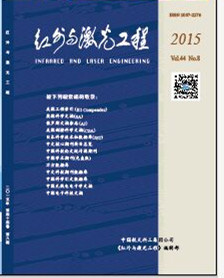|
[1]
|
Liu Jing, Wang Ronglan, Zhang Hongbo, et al. Space debris collision prediction research[J]. Chinses Journal of Space Science, 2004, 24(6): 462-469. (in Chinese) 刘静, 王荣兰, 张宏博, 等. 空间碎片碰撞预警研究[J]. 空间科学学报, 2004, 24(6): 462-469. |
|
[2]
|
Du Heng, Liu Jing. Manned spaceflight and space debris[J]. Aerospace China, 2002, (2): 18-23. (in Chinese) 都亨, 刘静. 载人航天和空间碎片[J]. 中国航天, 2002, (2): 18-23. |
|
[3]
|
Qi Xianfeng. The observation summarize of space debris[J]. Aerospace China, 2005, (7): 24-26. (in Chinese) 祁先锋. 空间碎片观测综述[J]. 中国航天, 2005, (7): 24-26. |
|
[4]
|
Li Yuqiang, Li Zhulian, Fu Honglin, et al. The experimentation of diffuse reflection laser ranging of space debris[J]. Chinese Journal of Lasers, 2011, 38(9): 0908001-1-0908001-5. (in Chinese) 李语强, 李祝莲, 伏红林, 等. 空间碎片漫反射激光测距试验[J]. 中国激光, 2011, 38(9): 0908001-1-0908001-5. |
|
[5]
|
Robert G Gottlieb, Steven J Sponaugle, David E Gaylor. Orbit determination accuracy requirements for collision avoidance[C]//Proceeding of the 11th annual AAS/AIAA Space Flight Mechanics Meeting, 2001, 2: 1105-1121. |
|
[6]
|
Ji Rongyi, Zhao Changing, Ren Xuecheng. High precision and high frequency pulse laser ranging system[J]. Infrared and Laser Engineering, 2011, 40(8): 1461-1464. (in Chinese) 纪荣祎, 赵长明, 任学成. 高精度高重频脉冲激光测距系统[J]. 红外与激光工程, 2011, 40(8): 1461-1464. |
|
[7]
|
Wu Zhibo, Zhang Zhongping, Yang Fumin, et al. Statistical analysis of successful detection probability of the returns in satellite laser ranging[J]. Science of Surveying and Mapping, 2006, 31(3): 28-29. (in Chinese) 吴志波, 张忠萍, 杨福民, 等. 卫星激光测距回波探测成功概率统计分析[J]. 测绘科学, 2006, 31(3): 28-29. |
|
[8]
|
Ye Shuhua, Huang Cheng. Astrogeodynamics[M]. Jinan: Shandong Science and Technology Publishing House, 2000: 91-118. (in Chinese) 叶叔华, 黄珹. 天文地球动力学[M]. 济南:山东科学技术出版社, 2000: 91-118. |
|
[9]
|
Ben Greene. Laser Tracking of Space Debris[R]. Proc. of 13th International Workshop on Laser Ranging Instrumentation, 2002. |
|
[10]
|
Zhang Zhongping, Zhang Haifeng, Wu Zhibo, et al. Experiment of laser ranging to space debris based on high power solid-state laser system at 200Hz repetition rate[J]. Chinese Journal of Lasers, 2014, 41(7): s108005-1-s108005-7. (in Chinese) 张忠萍, 张海峰, 吴志波, 等. 基于200 Hz重复频率高功率全固态激光器空间碎片激光测距试验[J]. 中国激光, 2014, 41(7): s108005-1-s108005-7. |
|
[11]
|
Georg Kirchner, Franz Koidl, Fabin Friederich, et al. Laser measurements to space debris from Graz SLR station[J]. Advance in Space Research, 2013, 51(1): 21-24. |
|
[12]
|
Yang Fumin, Zhang Zhongping, Chen Juping, et al. Preliminary results of laser ranging to un-cooperative targets at shanghai SLR station[R]. Proc of 16th International Workshop on Laser Ranging Instrumentation, 2008: 695-699. |
|
[13]
|
Li Rongwang. A Study on precision orbit determination based on SLR [D]. Kuming: Yunnan Observatories, CAS, 2010. (in Chinese) 李荣旺. 基于激光测距的人造卫星精密定轨研究[D]. 昆明: 中国科学院云南天文台, 2010. |
|
[14]
|
Sang J, Smith C. An analysis of observations from EOS space debris tracking system[C]//Australian Space Science Conference, 2011. |









 DownLoad:
DownLoad: